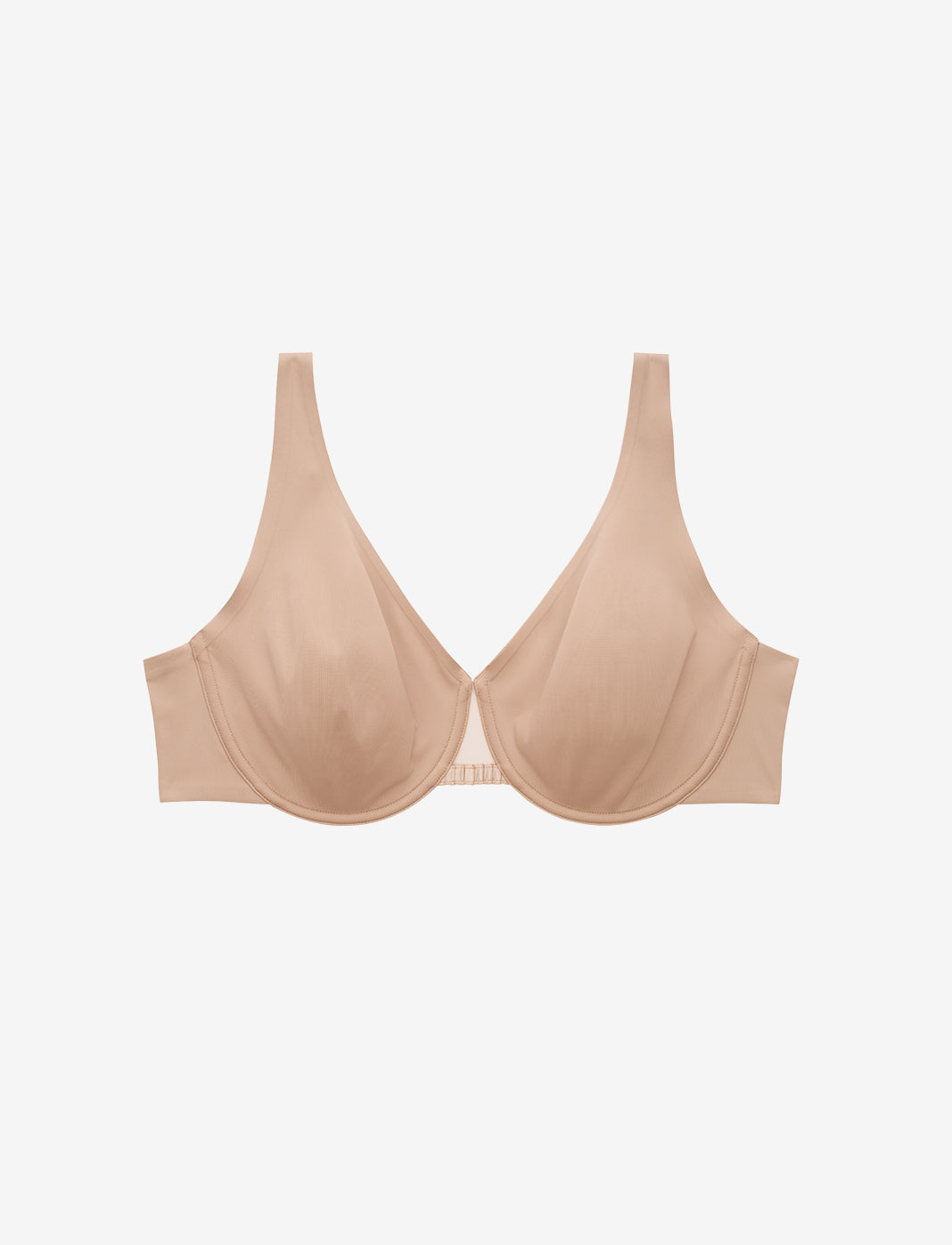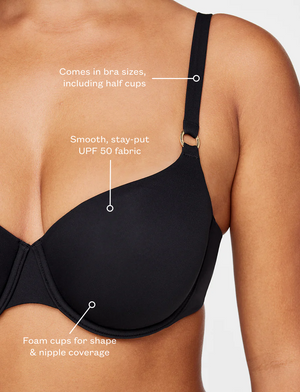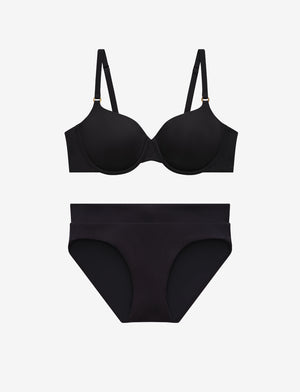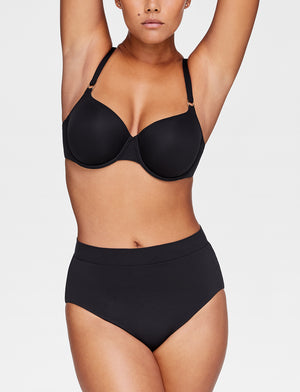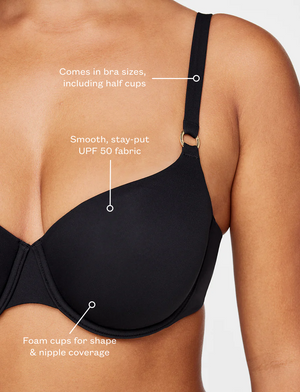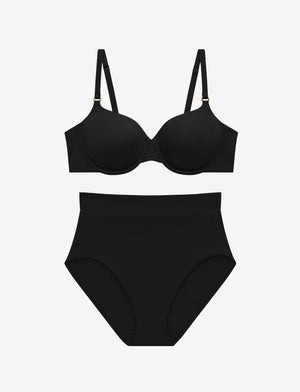Returns & exchanges free for 60 days for all U.S. orders. Please try on the bra to ensure a good fit, making sure to leave the original tags attached....
Read moreMyth or Fact: Does The Color Of Your Swimsuit Affect The Way You Tan?

Reds….and yellows….and blues, oh my!
After cold winter months in North America, the golden rays start calling, and you must go.
While color and style play a major part in beach attire, do your choices affect your tanning potential?
Before you hit the beaches, there are a few things you need to consider that will help you get the best and safest bang for your Summer buck.
Mythbusting Your Swimsuit Colour
With designers offering every color of swimsuit under the sun, not to mention those amazing IG influencer reels, it's hard not to believe that swimsuit color and tanning are related.
However, looking IG-worthy in your swimsuit is more about how your choice of color looks against your tan.
Color plays a minuscule role in influencing your tan. Thick, tightly woven, dark fabrics usually offer better UPF protection, but they absorb more UV rays, thus raising the internal temperature.
Light colors tend to reflect more UV rays, but this effect is minimal.
The fabric of your swimwear does influence your tan. But first, let's take a quick look at how tanning occurs and why it matters.
Role of UV Rays on Your Tan
That hot, glowing ball of hydrogen and helium, the sun, bathes our little blue terra firma in UV (Ultraviolet) radiation, specifically two types: A and B.
Both influence how tanning occurs but have different effects on the skin.
Tanning happens when UV radiation penetrates the epidermis or outer layer of the skin.
This action triggers melanocytes (special skin cells) to produce more melanin, which darkens the skin color. The more melanin produced, the darker the tan.
UVA rays produce an immediate tan response as they penetrate deeper into the epidermis.
UVB rays affect the outer surface of skin layers, contributing to those painful sunburns.
Based on understanding how UV rays affect skin, let's examine why fabric choice matters.

Swimsuit Fabric Can Affect Your Tan
Thick, tight-woven synthetic materials, like polyester and nylon, will block more UV rays than looser natural fabrics like cotton.
Stretched, thin fabric makes it easier for UV rays to penetrate, particularly when wet.
Factor in how old and often you have used your swimwear, as the fabric will naturally break down over time, and effectiveness will decrease.
While colors do not actively influence tanning sessions, they do have a minimal influence, as darker colors tend to absorb more UV rays, while light colors reflect them.
- Quality swimwear offers UV-blocking properties.
- Effectiveness will vary depending on the rating factor.
- The UPF, or Ultraviolet Protection Factor, is a rating system used to rank how effectively the fabric will block both types of UV rays. While ratings range from 15 to 50+, the higher the number, the better the protection.
This is not to be confused with SPF (sun protection factor), which rates UV, particularly UVB, protection for skin, and UPF ratings primarily for fabrics.
Now that you are ready to hit the beach, here are a couple of good safety practices.
Sun Safety Tips
- Wear proper-fitting swimwear with excellent UPF. Our swimwear collection is carefully crafted to flatter your body and retain its shape in and out of the water. Add that our premium fabric can boast a UPF 50+ rating, and you'll be sun-ready with style.
- Avoid tanning during the peak hours of 10 am—4 pm, when the UV rays are strongest. Stay cool by using umbrellas, tents, or other naturally shaded areas.
- Slather sunscreen (SPF 30+) on any exposed skin at least 15 minutes before sun exposure and two hours after swimming. Remember to dab a little extra on your more sensitive areas, like your neck, face, and especially your lips and ears.
- Stay well hydrated and avoid heat exhaustion. Dry skin is thirsty skin, so get sipping.
- Keep your skin moisturized, particularly if you've been exposed to a little too many UVB rays. After-sun protection is definitely a must.
- If you are fair-skinned, be extra careful, as you might tend to burn more quickly before you start to tan.
- Remember your eye and head protection. A first-rate pair of UV-blocking sunglasses and a wide-brimmed hat protect you and complete your IG-worthy ensemble.
- Poor tanning habits can cause serious health damage. Ensure that any medications you are taking are not adversely affected by extra sun exposure.
- Always check your skin for any unusual signs of skin damage, especially if you spend time outdoors regularly. Early awareness can go a long way toward prevention.

Recommended Colors to Make Your Tan Pop
Color is personal, but here are a couple of the best color swimsuits for tan skin.
Classic black: Not only does your tan appear more pronounced, warm, and golden, but black swimsuits, like our high-waisted bottom paired with our bra-sized bikini top, have a more visually flattering yet sophisticated mass appeal.
Classic white is another staple that contrasts stunningly with those rich bronze tones.
Hot pinks, electric blues, shocking oranges, or bright greens—wear if you dare. These are the statement pieces guaranteed to make that tan pop.
Golds and metallics: For a more luminesque, glowing skin look, these shimmering styles never fail to deliver.
Brown/yellow: Warm neutrals compliment that golden glow, especially if you want a more subdued yet classic/casual look.
Red: Like the vision of fire it invokes, your tan will appear more intense and rich.
Navy blue: A more subdued alternative to black.
Coral or turquoise: Both are beautiful beach shades slightly more toned down in nature from the dramatic neons.
So there you have it.
Your swimsuit color choice has minimal impact on the quality of your tan, but it says a lot about how you showcase that golden hue.
A well-designed, fitted swimsuit, like our All Women's Swim
Tags:

